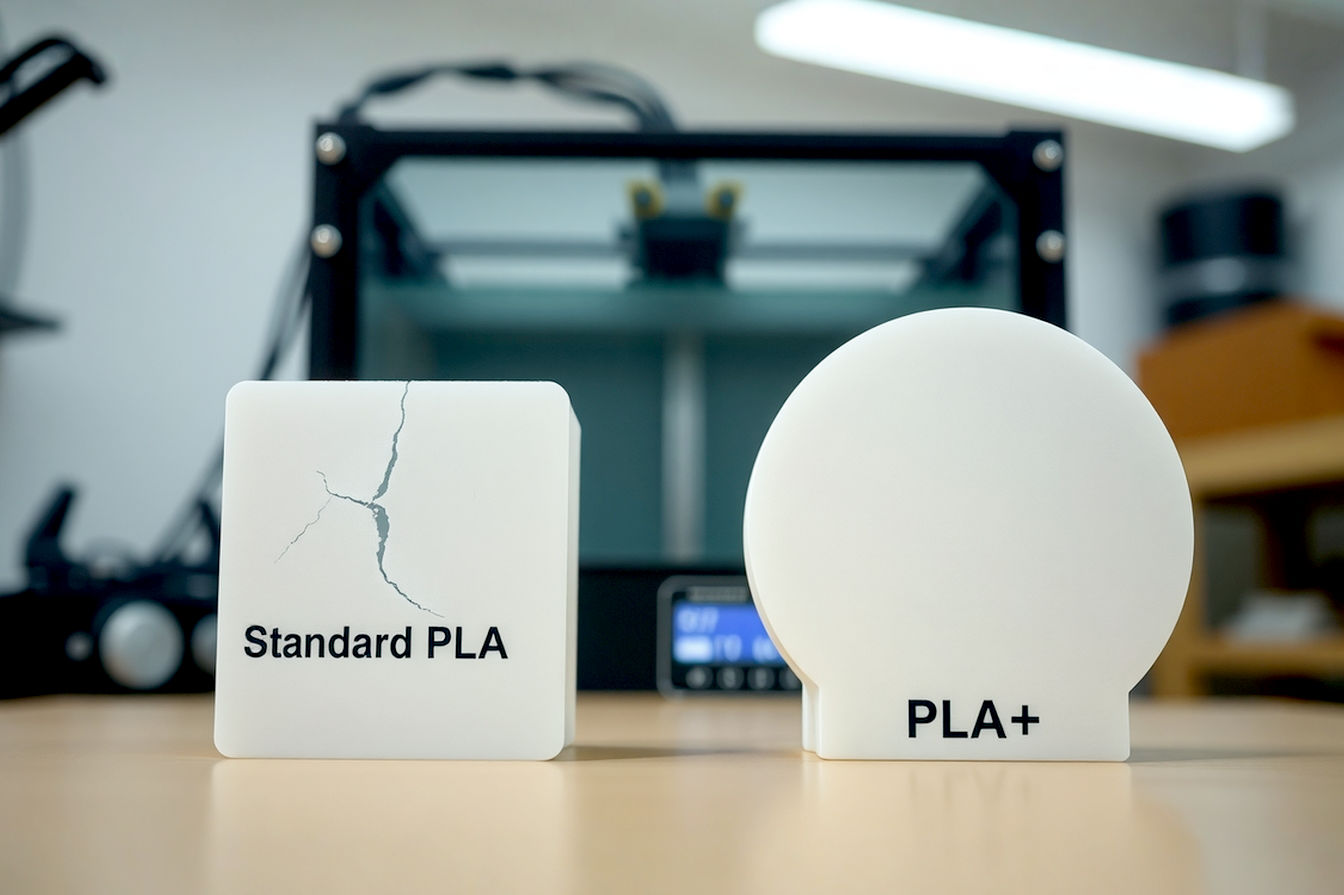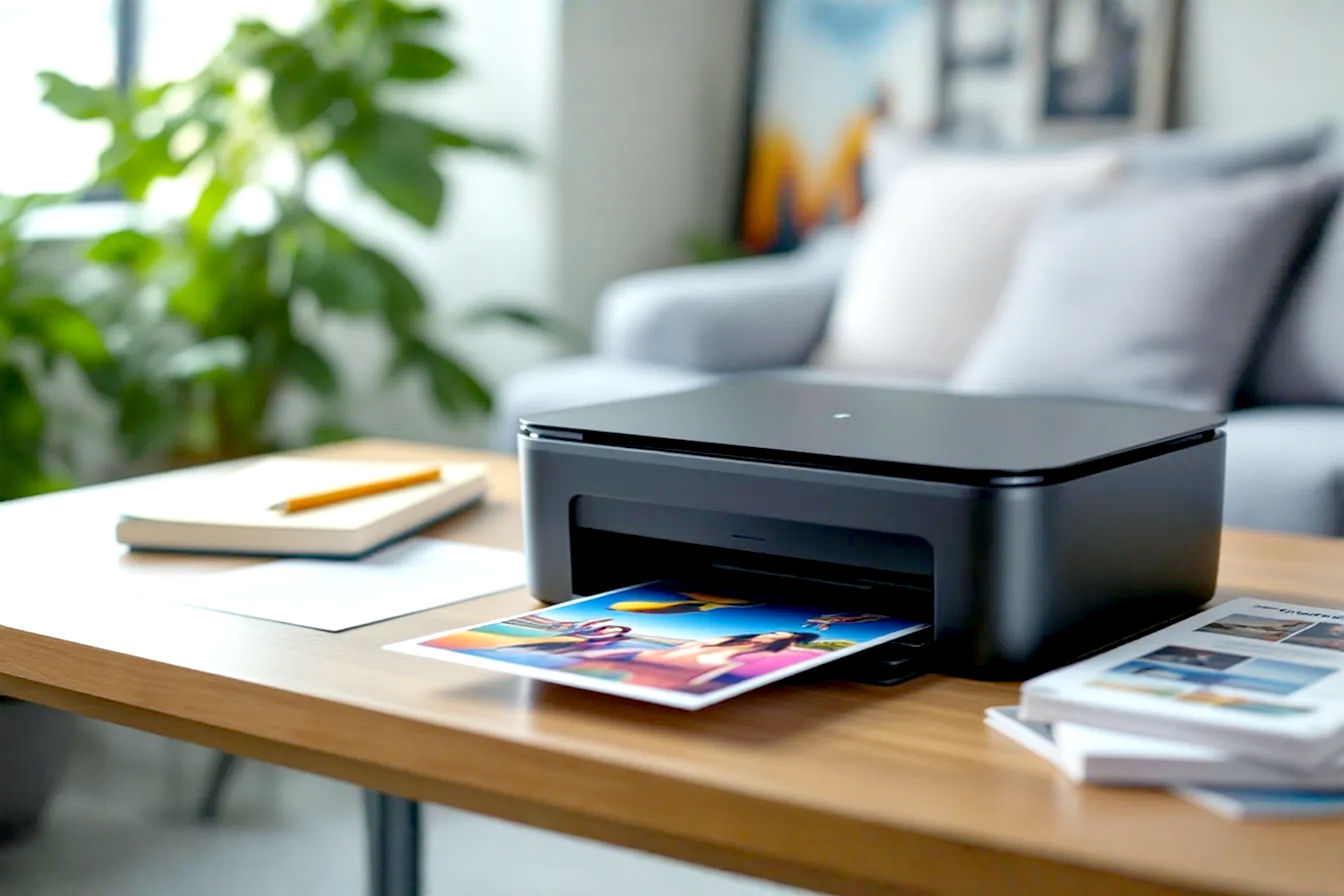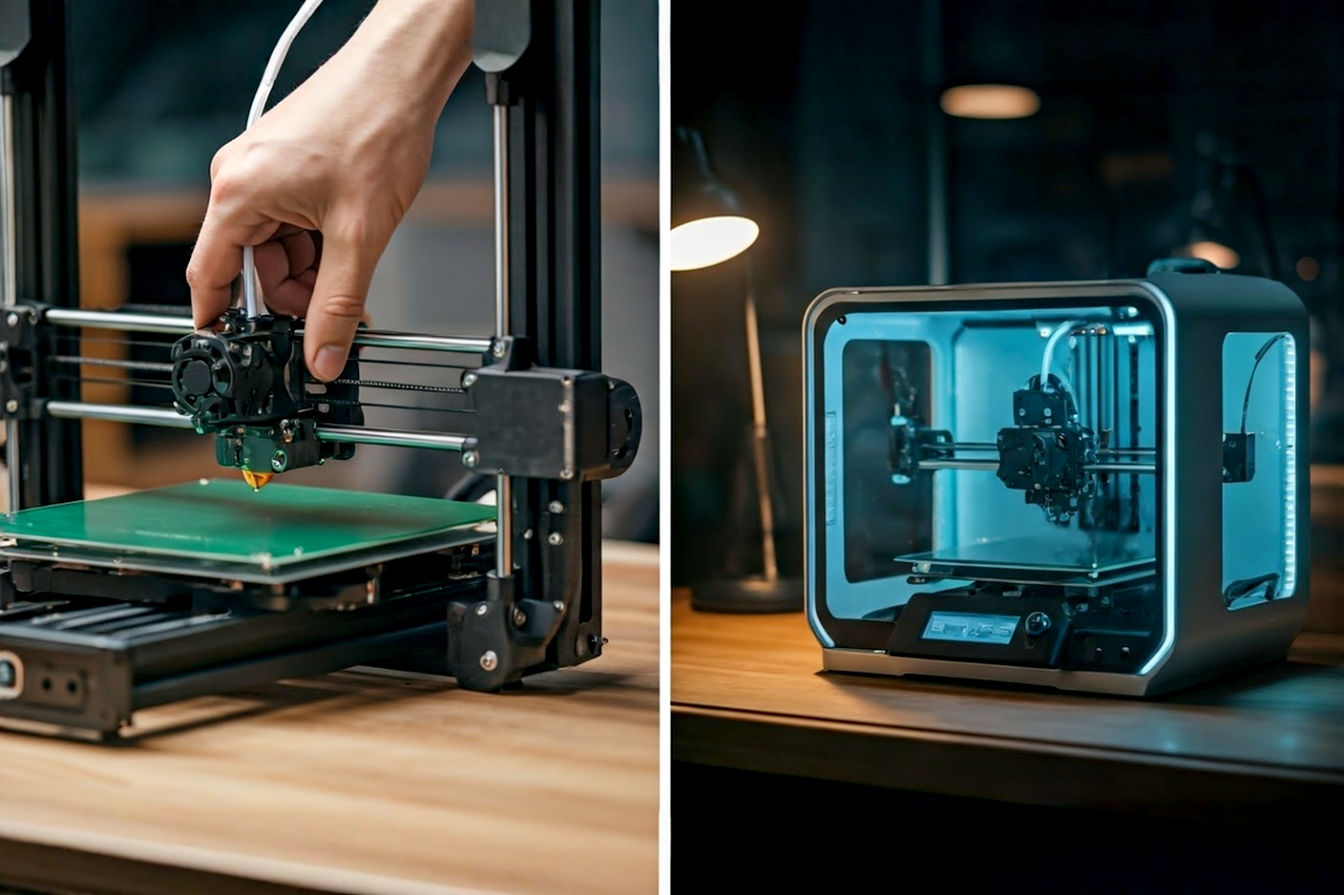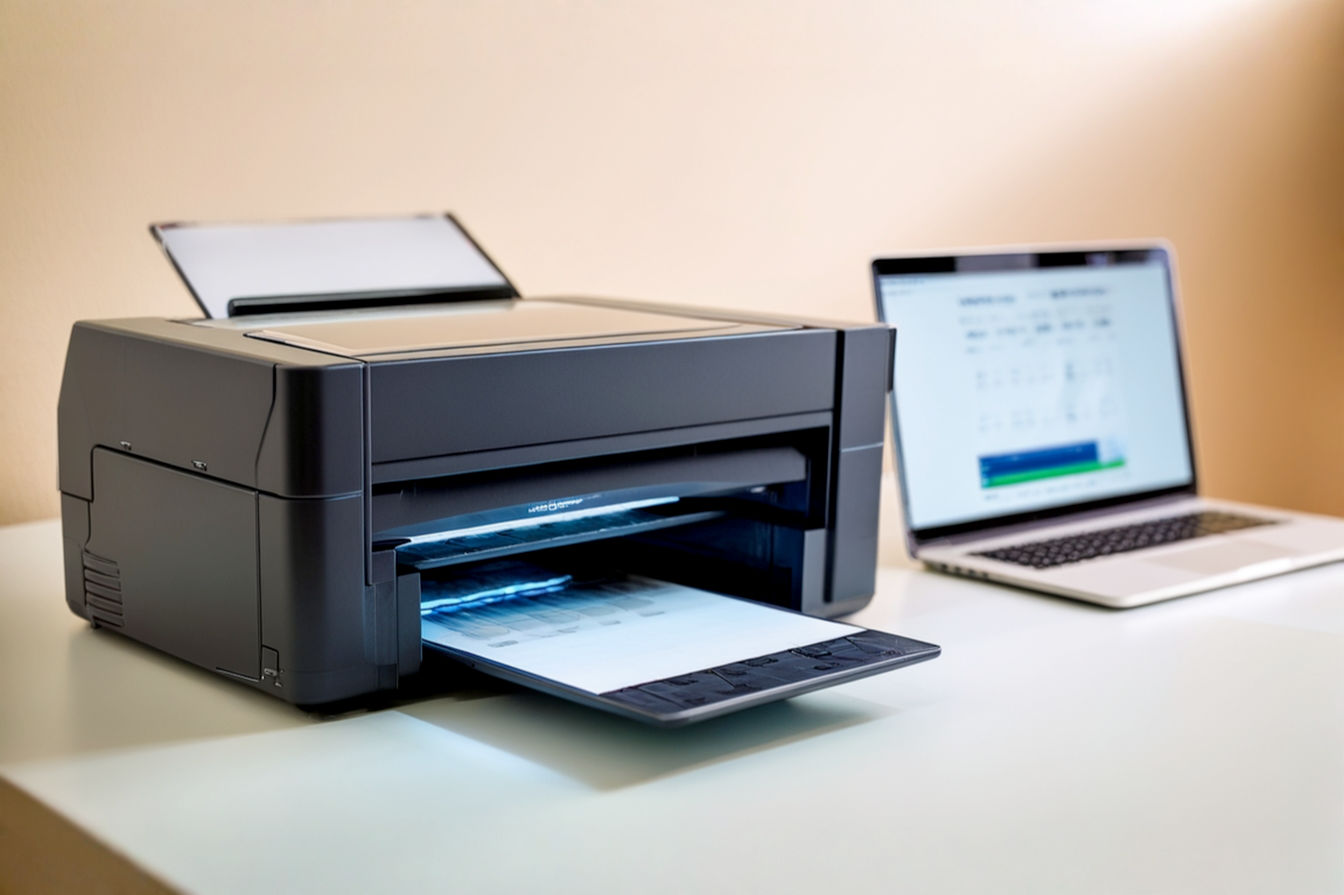This post may contain affiliate links. If you make a purchase through these links, we may earn a commission at no additional cost to you.
Choosing the right label printing technology for your business can feel complicated. Two main types dominate the market: direct thermal and thermal transfer. Both use heat to create an image, but they do it differently, and those differences have a big impact on cost. It’s not just about the price of the printer; you need to think about the ongoing expenses, like labels and ribbons, and even how long the labels need to last. Understanding these factors is key to figuring out which method will actually save you more money in the long run. This guide will break down everything you need to know to make the smartest decision for your specific needs.
Understanding the Basics: How Thermal Printing Works
Before diving into the costs, let’s quickly cover the basics of how thermal printing functions. This technology is widely used because it’s fast, reliable, and produces crisp, clear images perfect for barcodes, text, and graphics.
What is Thermal Printing?
At its core, thermal printing uses heat to create an image on a label or receipt. Unlike inkjet or laser printers, it doesn’t use ink or toner cartridges. Instead, the printhead contains tiny heating elements that are selectively heated up. When these heated elements come into contact with a heat-sensitive material, they cause a reaction that turns the material black, forming the desired image. This process is efficient and requires fewer moving parts than other printing methods, which often means less maintenance.
Two Main Methods: Direct Thermal and Thermal Transfer
While both methods use a heated printhead, the key difference lies in what the heat interacts with. Direct thermal printing applies heat directly to a specially coated label. Thermal transfer printing uses the heat to melt ink from a ribbon onto a standard label material. This distinction is crucial because it affects the cost of consumables, the durability of the printed label, and the types of applications each method is best suited for. We’ll explore each method in detail to understand their unique characteristics and cost implications.
Direct Thermal Printing: The Ribbon-Free Approach
Direct thermal printing is often seen as the simpler, more cost-effective option upfront. It eliminates one major consumable: the ribbon. Let’s look at how it works and where it fits best.
How Direct Thermal Technology Functions
Direct thermal printers use a printhead with small heating elements. When you send a label design to the printer, these elements heat up in the pattern of the image you want to print. The label material itself is coated with a heat-sensitive layer. As the heated printhead touches the label surface, the coating darkens where the heat is applied, creating the text, barcode, or image. It’s a straightforward process with fewer components involved compared to thermal transfer.
The Science Behind the Heat-Sensitive Material
The magic in direct thermal printing happens because of the special coating on the label material. This coating contains leuco dyes and other chemicals. When heated above a certain temperature threshold, a chemical reaction occurs, causing the leuco dye to change from colorless to a colored form, typically black. This reaction is permanent once it happens. The intensity of the heat controls how dark the mark is. The technical term for this process is thermochromism, where temperature changes the color of the material.
Key Components: Printer and Labels
The direct thermal printing system is quite simple. You primarily need two things:
- The Direct Thermal Printer: This contains the printhead with heating elements and the mechanism to feed the labels. These printers are often less complex mechanically than thermal transfer printers because they don’t need a ribbon path or spindle.
- Direct Thermal Labels: These are the specialized labels with the heat-sensitive coating. They look like regular labels but have this crucial layer that reacts to heat. They are available in various sizes and adhesives, but the surface material must be compatible with the direct thermal process.
Advantages of Direct Thermal
Direct thermal printing offers several compelling benefits, particularly related to cost and simplicity.
Simplicity and Ease of Use
One of the biggest draws is how easy it is to use. Since there’s no ribbon to load, align, or replace, operating a direct thermal printer is very intuitive. This reduces training time for staff and minimizes potential errors during media loading. It’s essentially just loading a roll of labels and pressing print. This simplicity can save time and reduce frustration in busy work environments.
Lower Upfront Costs
Generally, direct thermal printers tend to have a lower purchase price compared to thermal transfer printers with similar specifications. This is because the internal mechanisms are simpler; they don’t require the components needed to handle and tension a thermal ribbon. If your initial budget is a major concern, direct thermal can seem like the more attractive option.
Reduced Ongoing Consumable Costs (No Ribbon)
This is where the potential for significant savings comes in. With direct thermal, you only need to buy the labels. There’s no recurring cost for thermal ribbons. For high-volume applications, eliminating the ribbon expense can add up quickly, making the cost per printed label potentially lower than thermal transfer, provided the label’s lifespan meets your needs. This is a key factor in the cost-saving calculation.
Disadvantages of Direct Thermal
While the lack of a ribbon offers cost benefits, it also introduces some limitations, mainly concerning label durability.
Label Durability and Lifespan (Fading, Sensitivity)
The heat-sensitive coating on direct thermal labels is reactive, not just to the printhead’s heat, but also to other environmental factors. Exposure to heat (like sunlight or storage near a heat source), strong light (especially UV rays), and certain chemicals can cause the printed image to fade or disappear over time. Abrasion can also easily scratch the surface, damaging the print. This means direct thermal labels have a limited lifespan compared to thermal transfer labels.
Sensitivity to Heat, Light, and Abrasion
This sensitivity is the primary drawback. If a direct thermal label is applied to a package that sits in a hot delivery truck, or if a receipt is left on a dashboard, the print can quickly degrade. Rubbing against other surfaces can also make the image illegible. This makes direct thermal unsuitable for applications where labels need to remain readable for extended periods or in harsh conditions. The technical reason for this sensitivity is the chemical nature of the leuco dye coating; it’s designed to react to heat, but is also susceptible to other forms of energy and chemical interactions.
Limited Color Options (Typically Black)
Direct thermal printing is almost exclusively limited to printing in a single color, which is determined by the heat-sensitive coating. While some specialized direct thermal materials exist that can produce other colors, they are uncommon and significantly more expensive. For standard applications, you’ll be limited to black print on a white (or sometimes colored) label material. If you need multi-color labels or specific branding colors printed thermally, direct thermal isn’t the solution.
Best Applications for Direct Thermal
Given its characteristics, direct thermal printing is ideal for applications where the label’s lifespan is short and it won’t be exposed to harsh conditions.
Shipping Labels
This is perhaps the most common use case. Shipping labels are typically applied just before transit and only need to be readable for a few days or weeks. They are scanned upon pickup, at sorting facilities, and upon delivery. The print doesn’t need to survive long-term storage or extreme environmental exposure. The speed and cost-effectiveness of direct thermal make it perfect for high-volume shipping operations.
Receipts
Many point-of-sale (POS) systems use direct thermal printers for receipts. Customers usually don’t need receipts to last for years. While they can fade over time, they serve their purpose for immediate transaction verification or short-term returns. The quiet operation and speed of direct thermal are also advantages in a retail environment.
Short-Term Identification
Any application where a label is needed for a short duration, such as visitor passes, temporary badges, or queue tickets, is a good fit for direct thermal. The label serves its purpose for a few hours or days and is then discarded.
Indoor, Climate-Controlled Environments
If labels are used and stored indoors in a stable environment without exposure to direct sunlight, extreme temperatures, or moisture, direct thermal can be perfectly adequate. Examples include inventory labels in a climate-controlled warehouse or file folder labels in an office. The lack of environmental stress means the labels are less likely to fade prematurely.
Thermal Transfer Printing: The Ribbon-Assisted Method
Thermal transfer printing adds a component to the process: a thermal ribbon. This might seem like an added complexity and cost, but it unlocks significant advantages in terms of label durability and versatility.
How Thermal Transfer Technology Functions
Like direct thermal, thermal transfer printers use a heated printhead. However, instead of heating the label directly, the printhead heats a thermal ribbon. The ribbon is coated with ink (wax, wax-resin, or resin). When the heated elements of the printhead press the ribbon against the label material, the heat melts the ink from the ribbon onto the label surface. The ink is then permanently bonded to the label material as it cools. The label material itself is typically a standard paper, polyester, or polypropylene material, not heat-sensitive like direct thermal labels.
The Role of the Thermal Ribbon
The thermal ribbon is the key consumable that differentiates this method. It acts as the ink source. The ribbon is a thin film, usually made of polyester, coated on one side with a dry ink formulation. The printhead’s heat transfers this ink precisely onto the label. The ribbon is typically used only once, with the “spent” portion being wound onto a take-up spool. This means you consume ribbon at the same rate as labels are printed.
Types of Thermal Ribbons (Wax, Wax-Resin, Resin)
The type of ink coating on the ribbon is critical because it determines the durability of the printed image and affects the cost. There are three main types:
Wax Ribbons: Cost-Effective, Less Durable
Wax ribbons are the most economical type. The ink is primarily wax-based. They require a lower melting temperature, meaning they can be used with printers that have less intense heat settings and potentially extend the life of the printhead. However, wax ink is the least durable. It’s susceptible to scratching, smudging, and degradation from chemicals and heat.
Wax-Resin Ribbons: Balanced Durability and Cost
These ribbons offer a good balance between cost and durability. The ink is a blend of wax and resin. The resin component provides increased resistance to smudging, scratching, and some chemicals compared to pure wax ribbons. They require a slightly higher heat setting than wax ribbons but offer better performance for applications needing more resilience than direct thermal or wax.
Resin Ribbons: Maximum Durability, Higher Cost
Resin ribbons are the most expensive but provide the highest level of durability. The ink is primarily resin-based. They require the highest heat settings to melt the ink effectively. Once transferred and cooled, resin ink is extremely resistant to scratching, smudging, water, harsh chemicals (like solvents), and extreme temperatures. They are ideal for applications where the label must withstand challenging environments.
Key Components: Printer, Labels, and Ribbon
A thermal transfer printing system requires three main components:
- The Thermal Transfer Printer: This printer is designed to handle both the label material and the thermal ribbon. It has spindles for the supply ribbon and a take-up spindle for the used ribbon. The printhead applies heat and pressure to transfer ink from the ribbon to the label. These printers are often more robust and have more complex mechanisms than direct thermal printers.
- Thermal Transfer Labels: These labels do not have a heat-sensitive coating. They are made of various materials like paper, polypropylene, polyester, or vinyl, chosen based on the required durability and flexibility. The surface is designed to accept and bond with the thermal ribbon ink.
- Thermal Ribbons: As discussed, these are the rolls of film coated with wax, wax-resin, or resin ink. The ribbon width and length must be compatible with the printer and the label size.
Advantages of Thermal Transfer
The use of a ribbon provides significant benefits, primarily related to the quality and longevity of the printed image.
Superior Print Durability and Longevity
This is the primary advantage. Because the image is formed by transferring a durable ink formulation onto the label material, the print is far more resistant to fading, smudging, scratching, and degradation from exposure to light, heat, and time compared to direct thermal. The print can last for many years, even decades, depending on the ribbon and label material used.
Resistance to Harsh Environments (Chemicals, Abrasion, Temperature)
Thermal transfer labels, especially when printed with resin ribbons on synthetic label materials, can withstand exposure to a wide range of challenging conditions. This includes contact with oils, solvents, water, and cleaning agents, as well as resistance to abrasion, tearing, and extreme hot or cold temperatures. This makes them suitable for industrial, automotive, and outdoor applications.
Wider Range of Label Materials and Colors
Since the label material doesn’t need a special heat-sensitive coating, thermal transfer printers can print on a much broader variety of substrates. This includes durable plastics (polyester, polypropylene, vinyl), specialized papers, and even fabrics. You can also use pre-colored labels or print with colored thermal ribbons (though black is most common) to add branding or visual cues. This versatility allows for labels tailored precisely to the application’s needs.
High-Quality Print Resolution
Thermal transfer printers are often capable of higher print resolutions (measured in dots per inch or DPI) than direct thermal printers. This allows for printing very small text, intricate graphics, and high-density barcodes with exceptional clarity and precision. This is important for applications requiring small labels or highly detailed information.
Disadvantages of Thermal Transfer
The benefits of thermal transfer come with some trade-offs, mainly related to cost and complexity.
Higher Upfront Costs (Printer)
Thermal transfer printers are generally more expensive to purchase than direct thermal printers with comparable print width and speed. The added mechanisms required to handle the ribbon contribute to this higher manufacturing cost, which is passed on to the consumer.
Increased Ongoing Consumable Costs (Ribbon)
This is the most significant ongoing cost difference. In addition to buying labels, you must also purchase thermal ribbons. The cost of ribbons adds to the overall cost per printed label. The price of the ribbon varies depending on the type (wax is cheapest, resin is most expensive) and the size. For high-volume printing, the cumulative cost of ribbons can be substantial.
More Complex Setup and Maintenance (Loading Ribbon)
Loading a thermal ribbon correctly requires a bit more care than simply loading a label roll. You need to ensure the ribbon is oriented correctly, threaded through the print path, and properly tensioned on the take-up spindle. While not overly difficult, it adds a step to the media loading process and is a potential point of error that could lead to print quality issues or ribbon breaks.
Best Applications for Thermal Transfer
Due to their durability and versatility, thermal transfer labels are best suited for applications where the label needs to last and withstand challenging conditions.
Product Identification Labels
Labels on products that remain on shelves, in warehouses, or in transit for extended periods benefit from the longevity of thermal transfer. This includes serial number labels, manufacturing date labels, and product information labels that need to remain legible throughout the product’s lifecycle.
Asset Tracking Labels
Labels used to track valuable assets, such as equipment, tools, or IT assets, often need to survive for years and withstand handling and environmental exposure. Thermal transfer, particularly with durable label materials and resin ribbons, is the standard for asset tagging due to its resistance to abrasion and chemicals.
Outdoor Labeling
Labels exposed to sunlight, rain, temperature fluctuations, and dirt require significant durability. Thermal transfer on weather-resistant synthetic materials with resin ribbons is essential for outdoor applications like plant tags, signage, or equipment labels.
Labels Exposed to Chemicals or Abrasion
In industrial settings, laboratories, or automotive environments, labels may come into contact with oils, solvents, cleaning agents, or experience physical rubbing. Thermal transfer with appropriate ribbon types (wax-resin or resin) provides the necessary chemical and abrasion resistance.
Long-Term Archiving
Any application where labels need to remain readable for many years, such as archive box labels, library labels, or legal document labels, is best served by thermal transfer to prevent fading over time.
The Core Comparison: Cost Analysis
Now that we understand how each technology works and its pros and cons, let’s get to the heart of the matter: the cost. Comparing direct thermal and thermal transfer purely on the price per roll of labels is misleading. You need to look at the total cost of ownership over time.
Breaking Down the Costs: Beyond the Label Roll
To truly compare the cost-effectiveness, we must consider all expenses involved in printing labels. This includes the initial hardware cost, the ongoing consumable costs (labels and ribbons), and less obvious factors like potential downtime or the cost of replacing faded labels.
Initial Investment: Printer Costs
The purchase price of the printer is your first major expense.
Direct Thermal Printer Costs
Direct thermal printers are generally less expensive to buy than their thermal transfer counterparts. You can find basic desktop direct thermal printers for a few hundred dollars, while industrial models designed for high volume will cost more, but typically still less than comparable thermal transfer industrial printers.
Thermal Transfer Printer Costs
Thermal transfer printers require more complex internal mechanisms to handle the ribbon, which translates to a higher manufacturing cost and thus a higher purchase price. Desktop thermal transfer printers usually start at a slightly higher price point than direct thermal, and industrial thermal transfer printers can be significantly more expensive.
Dual-Mode Printers: A Flexible Option?
Some printers are designed to operate in both direct thermal and thermal transfer modes. These offer flexibility, allowing you to choose the method based on the application. However, these dual-mode printers often come at a higher initial cost than a printer dedicated to just one technology. While they provide versatility, you need to assess if the added cost is justified by your need to print both short-term and long-term labels.
Consumable Costs: The Ongoing Expense
This is where the cost comparison becomes more nuanced and depends heavily on your printing volume.
Direct Thermal Label Costs per Roll/Label
Direct thermal labels are typically more expensive per label or per roll than standard thermal transfer labels of the same size and material (e.g., paper). This is because of the specialized heat-sensitive coating required on the direct thermal material.
Thermal Transfer Label Costs per Roll/Label
Standard thermal transfer labels (like paper) are generally less expensive per label than direct thermal labels. The label material itself is simpler and doesn’t require the specialized coating. However, this is only part of the consumable cost calculation.
Thermal Transfer Ribbon Costs per Roll/Label
This is the added cost in the thermal transfer equation. The price of a thermal ribbon roll varies based on its width, length, and the type of ink (wax, wax-resin, resin). When calculating the cost per label, you need to factor in how many labels you can print with one roll of ribbon. Ribbon usage is typically 1:1 with label usage in terms of length, so a 300-meter ribbon roll will print approximately 300 meters of labels.
Calculating Cost Per Print: A Practical Approach
To get a realistic cost comparison, you need to calculate the cost per printed label for each method.
Direct Thermal Cost Per Label = Cost of Direct Thermal Label Roll / Number of Labels on the Roll
Thermal Transfer Cost Per Label = (Cost of Thermal Transfer Label Roll + Cost of Compatible Ribbon Roll) / Number of Labels on the Thermal Transfer Label Roll
You need to ensure the ribbon length is compatible with the label roll length to minimize waste and simplify calculation. For example, if you have a label roll with 500 labels and a ribbon that can print 1000 labels, you’ll use half a ribbon roll per label roll.
Hidden Costs and Factors
Beyond the obvious costs of printers and consumables, several less apparent factors can influence the true cost of ownership.
Downtime and Maintenance
While direct thermal printers are simpler, printhead failure can be costly. Thermal transfer printers have the added complexity of ribbon handling, which can sometimes lead to jams if the ribbon isn’t loaded correctly. Any time a printer is down for maintenance or troubleshooting, it costs your business in lost productivity.
Label Replacement Due to Fading/Damage
If you use direct thermal labels for an application where they fade or get damaged prematurely, you might incur costs related to re-labeling products, assets, or shipments. This cost of failure needs to be factored in, especially for applications requiring long-term readability. Using the wrong label type can lead to significant hidden expenses.
Printer Lifespan and Repair
The overall lifespan of the printer and the cost of repairs should also be considered. Industrial-grade thermal transfer printers are often built more robustly and designed for higher volumes and longer lifespans than basic direct thermal printers. While the initial cost is higher, they might last longer and require less frequent replacement or repair.
Waste (Ribbon Waste in Thermal Transfer)
Thermal transfer printing generates used ribbon waste. While not a direct monetary cost in the same way as purchasing consumables, there might be costs associated with disposing of this waste, especially in large-scale operations. Direct thermal printing only produces used label liner waste.
Inventory Management (Managing Ribbons)
With thermal transfer, you need to manage inventory for both labels and ribbons. This adds complexity compared to managing just label stock for direct thermal printing. Ensuring you have the correct ribbon type and size for your labels requires careful planning and storage space.
Scenario Analysis: When Each Method Shines
Let’s look at specific situations to see which method is likely to be more cost-effective.
High Volume, Short-Term Needs (Direct Thermal Advantage)
If you print a large number of labels that only need to be readable for a short time (days to a few months) and won’t be exposed to harsh conditions, direct thermal is often the cheaper option overall. The savings from not buying ribbons outweigh the slightly higher cost of direct thermal labels. Shipping labels are a prime example.
Low Volume, High Durability Needs (Thermal Transfer Advantage)
If you print a relatively small number of labels that need to be highly durable and last for years or withstand harsh environments, thermal transfer is almost always the more cost-effective choice in the long run. While the initial cost per label (including the ribbon) is higher, you avoid the cost of re-labeling due to fading or damage. The longevity of the thermal transfer label provides better value over time for these critical applications.
Applications Requiring Chemical Resistance (Thermal Transfer Necessity)
For labels that will come into contact with chemicals, solvents, or oils, direct thermal is simply not suitable. The coating will likely react and the print will disappear. Thermal transfer with appropriate resin ribbons and synthetic labels is necessary here, making it the only viable and therefore most cost-effective long-term solution, despite the higher per-label cost. The cost of non-compliance or safety issues from illegible labels far outweighs the printing cost difference.
Simple Shipping vs. Complex Product Labeling
Simple shipping labels with basic address and barcode information are perfect for direct thermal. Product labels that include detailed information, serial numbers, batch codes, and potentially need to last for the product’s warranty period or beyond are better suited for thermal transfer due to the need for durability and potentially higher print quality for small text or complex barcodes.
Calculating Your True Cost: A Step-by-Step Guide
Making the right decision requires a systematic approach to calculating the total cost over a reasonable timeframe. Here’s how you can do it:
Step 1: Assess Your Application Needs (Durability, Environment, Lifespan)
This is the most critical first step. What will the label be used for? How long does it need to last? Will it be exposed to sunlight, heat, cold, moisture, chemicals, or abrasion? Be realistic about the conditions the label will face. If durability is paramount, direct thermal is likely out of the running, regardless of its lower initial cost.
Step 2: Estimate Your Printing Volume (Labels Per Day/Week/Month)
Get a clear idea of how many labels you print regularly. This volume is essential for projecting consumable costs over time. Do you print hundreds of shipping labels daily, or a few dozen asset tags monthly?
Step 3: Research Printer Costs (Direct Thermal vs. Thermal Transfer)
Obtain quotes for direct thermal and thermal transfer printers that meet your volume, speed, and feature requirements (e.g., print width, connectivity). Compare models with similar capabilities. Also, look into the cost of dual-mode printers if flexibility is a consideration.
Step 4: Research Consumable Costs (Labels and Ribbons)
Get pricing for direct thermal labels and comparable thermal transfer labels (same size, material type like paper). Also, get pricing for the appropriate thermal transfer ribbons (wax, wax-resin, or resin) based on your durability needs. Ensure the ribbon size is compatible with the printer and label roll.
Step 5: Calculate Cost Per Label for Each Method
Use the formulas discussed earlier to calculate the cost per printed label for both direct thermal and thermal transfer, factoring in the ribbon cost for thermal transfer.
Step 6: Project Total Costs Over Time (1 Year, 3 Years, 5 Years)
Multiply your estimated printing volume by the cost per label for each method. Add the initial printer cost to the projected consumable costs over a specific timeframe (e.g., 1 year, 3 years, 5 years). This gives you a projected total cost of ownership.
Step 7: Factor in Potential Hidden Costs
Consider the likelihood and potential cost of label failure (fading, damage) for direct thermal in your application. Think about potential downtime costs or the cost of managing ribbon inventory for thermal transfer. While harder to quantify precisely, these factors can swing the cost advantage.
Step 8: Make an Informed Decision Based on Your Specific Situation
Compare the projected total costs over your chosen timeframe. Consider the non-cost factors like durability requirements, ease of use, and print quality. The method with the lowest total cost of ownership that also meets your application’s requirements is the right choice. Don’t choose direct thermal just because the labels are cheaper per roll if they won’t last as long as you need them to.
Beyond Cost: Other Factors to Consider
While cost is a major driver, several other factors should influence your decision.
Print Quality and Resolution
Thermal transfer printers generally offer higher print resolutions (300 DPI, 600 DPI) compared to standard direct thermal printers (typically 203 DPI). If you need to print very small text, intricate graphics, or high-density 2D barcodes (like QR codes or Data Matrix), the higher resolution of thermal transfer might be necessary, regardless of cost.
Environmental Impact (Ribbon Waste)
Thermal transfer printing produces used ribbon waste, which needs to be disposed of. Direct thermal printing generates less waste, primarily just the label liner. If environmental impact is a significant concern for your business, the reduced waste of direct thermal could be a factor, assuming it meets your other needs.
Printer Features and Connectivity
Consider features like print speed, maximum print width, connectivity options (USB, Ethernet, Wi-Fi), and compatibility with your existing software systems. Ensure the printer you choose, whether direct thermal or thermal transfer, meets your operational requirements.
Ease of Use and Training
As mentioned earlier, direct thermal printers are simpler to operate due to the lack of ribbons. If you have many users or high employee turnover, the ease of use of direct thermal could reduce training time and potential errors, which is a form of cost saving.
Compliance Requirements (Specific Industry Standards)
Certain industries or applications may have specific requirements for label durability or print quality. For example, some supply chain or regulatory standards might implicitly or explicitly favor the longevity and resilience offered by thermal transfer printing. Ensure your chosen method complies with any relevant standards.
Making the Right Choice for Your Business
Deciding between direct thermal and thermal transfer isn’t just about finding the cheapest label roll. It’s about understanding your specific needs and calculating the total cost of ownership over the useful life of the labels and the printer.
Recap of Key Differences
To summarize, direct thermal is simpler, has lower upfront printer costs, and no ribbon cost, but the labels are less durable and sensitive to environmental factors. Thermal transfer has higher upfront printer costs and ongoing ribbon costs, but offers superior label durability, resistance to harsh conditions, and greater versatility in label materials and print quality.
Decision Matrix: A Quick Reference
| Feature | Direct Thermal | Thermal Transfer |
| Printer Cost | Lower | Higher |
| Consumables | Labels Only (Higher per label) | Labels + Ribbons (Lower label cost + Ribbon cost) |
| Print Durability | Low (Fades over time) | High (Resistant to fading, abrasion, chemicals) |
| Environment | Best for indoor, climate-controlled | Excellent for harsh conditions, outdoor |
| Lifespan | Short-term (Days to months) | Long-term (Years) |
| Complexity | Simple to use | More complex (Ribbon loading) |
| Applications | Shipping, Receipts, Short-term ID | Product ID, Asset Tracking, Outdoor, Chemical Exposure |
| Print Quality | Typically lower resolution | Typically higher resolution |
Consulting with a Labeling Expert
If you’re still unsure, consider consulting with a vendor or expert specializing in labeling solutions. They can help analyze your specific applications, volume, and environmental conditions to recommend the most cost-effective and appropriate technology for your needs. They can also provide samples for testing in your actual environment.
Conclusion: Maximizing Savings Through Smart Labeling
Ultimately, saving money on label printing isn’t about finding the lowest price per label today. It’s about choosing the technology that provides the required performance and durability for your application at the lowest total cost over the entire life cycle of the labels and the equipment. For short-term, high-volume applications in controlled environments, direct thermal often offers the best value due to its simplicity and lack of ribbon costs. However, for applications requiring durable, long-lasting labels that can withstand challenging conditions, thermal transfer is the clear winner, providing the necessary resilience to avoid costly re-labeling and ensuring critical information remains legible. By carefully assessing your needs and calculating the true cost of ownership, you can make an informed decision that maximizes your savings and ensures your labeling process is efficient and reliable.






